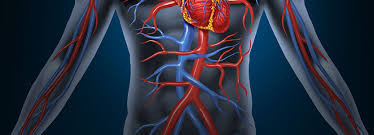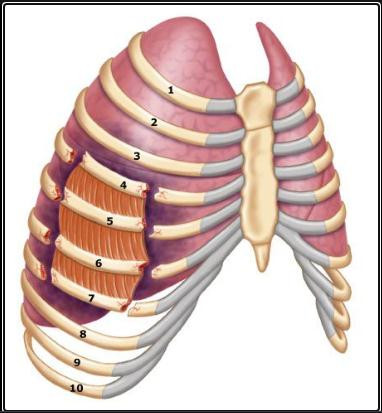Definisi
Trauma vaskular adalah cedera yang terjadi pada pembuluh darah arteri atau vena. Arteri merupakan pembuluh darah yang berfungsi membawa darah yang kaya oksigen ke anggota gerak tubuh dan seluruh organ tubuh. Vena merupakan pembuluh darah yang berfungsi membawa darah kembali ke jantung. Selain mengenai pembuluh darah arteri dan vena, trauma vaskular juga dapat mempengaruhi sistem limfatik atau kelenjar getah bening. Trauma vaskular paling sering terjadi pada pembuluh darah anggota gerak tubuh, terutama pada kaki sebanyak 80-90% kasus. Hal ini biasanya terkait dengan cedera pada kaki atau sendi yang mengalami pengapuran. Trauma vaskular biasanya menimbulkan perdarahan dan menyebabkan menurunnya suplai oksigen pada jaringan tubuh (hipoksia). Deteksi dini dan tata laksana awal berperan penting untuk mencegah amputasi anggota gerak tubuh, serta untuk meningkatkan angka penyembuhan.
Trauma vaskular dapat dibagi berdasarkan jenis cedera yang menyebabkannya, yaitu:
- Trauma tembus (penetrasi), di mana cedera disebabkan oleh suatu benda yang menusuk atau merusak kulit (misalnya akibat benda tajam atau runcing dalam suatu konflik bersenjata). Benda-benda tersebut dapat menyebabkan pembuluh darah menjadi pecah dan terputus, sehingga menimbulkan perdarahan atau terbentuknya trombosis (bekuan darah).
- Trauma tumpul (non-penetrasi), di mana cedera mungkin disebabkan oleh suatu tekanan pada jaringan tubuh atau benturan akibat penurunan kecepatan secara tiba-tiba. Hal tersebut kemudian menyebabkan hancurnya struktur dinding pembuluh darah atau meregangnya pembuluh darah, yang dapat menyebabkan robekan pada pembuluh darah dan terbentuknya bekuan darah.
Penyebab
Berdasarkan mekanisme terjadinya cedera (trauma tumpul atau trauma tembus) dan lokasi terjadinya (anggota gerak atas atau bawah), penyebab timbulnya trauma vaskular dapat bervariasi. Trauma tembus dapat disebabkan oleh benda-benda yang berupa peluru kendali (misalnya peluru, pecahan dari ledakan, dan lain-lain) atau tusukan (misalnya pisau, gantungan baju, kunci, dan lain-lain). Tidak semua cedera tembus disebabkan oleh suatu kekerasan fisik. Banyak trauma tembus pada anggota gerak tubuh dilaporkan diakibatkan dari kecelakaan industri (misalnya, kelalaian saat menggunakan alat tembak paku) atau komplikasi dari suatu prosedur medis, misalnya pembedahan. Trauma tumpul biasanya terjadi sebagai akibat dari kecelakaan kendaraan bermotor, seperti terjatuh dari motor, yang dapat menyebabkan timbulnya patah tulang atau bergesernya posisi tulang.
Secara umum, beberapa hal yang dapat menyebabkan timbulnya trauma vaskular, antara lain:
- Kecelakaan lalu lintas, seperti kecelakaan sepeda dan kendaraan bermotor saat mengemudi atau berkendara
- Kecelakaan terkait pekerjaan
- Kecelakaan di rumah
- Luka tusuk
- Cedera akibat olahraga
- Kekerasan dalam rumah tangga
- Cedera akibat perkelahian
- Kejahatan kekerasan
- Komplikasi prosedur medis tertentu
Faktor Risiko
Kebanyakan kasus trauma vaskular pada dasarnya berkaitan dengan suatu kecelakaan, baik di lingkungan tempat tinggal, kerja, maupun di jalanan. Faktor-faktor yang dapat meningkatkan risiko timbulnya suatu kecelakaan tentu akan meningkatkan juga terjadinya trauma vaskular, seperti:
- Tinggal di daerah konflik yang rawan terjadi perkelahian atau peperangan
- Bekerja di lingkungan kerja yang banyak menggunakan mesin atau alat yang berpotensi melukai tubuh
- Menjalankan suatu prosedur medis, seperti pembedahan
- Sering melakukan olahraga atau aktivitas yang ekstrem
- Tidak mematuhi aturan lalu lintas dan tidak menggunakan helm atau sabuk pengaman (seatbelt) ketika mengendarai kendaran bermotor
Gejala
Trauma vaskular dapat menyebabkan berbagai gejala dan sering diklasifikasikan menjadi gejala serius dan gejala yang tidak terlalu serius.
Gejala yang serius meliputi:
- Tidak adanya nadi pada bagian tubuh yang lebih ujung dari lokasi trauma vaskular
- Perdarahan aktif
- Iskemia akut, yaitu penurunan kadar oksigen dalam jaringan tubuh yang terjadi secara tiba-tiba
- Hematoma (pendarahan lokal di luar pembuluh darah) yang berdenyut
- Adanya bising jantung
Gejala trauma vaskular yang tidak terlalu serius meliputi:
- Denyut nadi pada bagian tubuh yang lebih ujung dari lokasi trauma vaskular berkurang
- Cedera di dekat pembuluh darah penting
- Tekanan darah tinggi atau syok
- Timbulnya gangguan saraf
- Patah tulang atau pergeseran tulang
Diagnosis
Trauma vaskular termasuk suatu kasus gawat darurat sehingga sebelum melakukan pemeriksaan secara menyeluruh, dokter akan memberikan tata laksana awal terlebih dahulu. Jika keadaan penderita telah stabil, dokter akan melakukan wawancara dengan penderita (jika sadar) atau dengan orang lain yang menyaksikan terjadinya trauma vaskular. Dokter akan menanyakan gejala-gejala yang timbul, serta kapan dan bagaimana mekanisme terjadinya trauma tersebut. Selanjutnya, dokter juga akan melakukan pemeriksaan fisik, seperti:
- Memeriksa keadaan umum pasien dan derajat stabilitas hemodinamik (pergerakan darah)
- Memeriksa lokasi cedera pada tubuh
- Mencari apakah ada cedera tulang atau sendi
- Mencari apakah ada perdarahan aktif
- Mencari perubahan warna dan suhu pada anggota gerak tubuh
- Memeriksa adakah gangguan saraf
- Mendengarkan suara jantung dengan stetoskop
Dokter juga dapat melakukan beberapa pemeriksaan tambahan untuk menyingkirkan kemungkinan cedera yang tersembunyi dan membantu menetapkan tata laksana selanjutnya, seperti:
- Pemeriksaan vaskular non-invasif seperti USG Doppler untuk menyingkirkan adanya kemungkinan kerusakan pembuluh darah arteri yang tidak terlihat atau untuk memastikan struktur arteri secara lebih jelas, khususnya pada pasien yang sulit diperiksa karena adanya pembengkakan atau luka terbuka.
- Rontgen dada atau anggota gerak tubuh akan membantu memberikan lebih banyak informasi tentang kemungkinan adanya trauma vaskular.
- Computed Angiotomografi atau MR Angiografi dapat membantu dalam menegakkan diagnosis awal trauma vaskular, dan sangat berguna untuk mendiagnosis cedera pada leher, perut, dan dada.
- Arteriografi adalah pemeriksaan standar untuk mendiagnosis trauma vaskular. Pemeriksaan ini dapat digunakan untuk mengetahui lokasi dan perluasan cedera, serta pembuluh darah apa yang terpengaruh.
Tata Laksana
Tata laksana awal trauma vaskular adalah dengan menstabilkan keadaan umum penderita. Kasus trauma vaskular seringkali disertai dengan cedera pada beberapa bagian tubuh, tidak hanya mengenai pembuluh darah saja. Tata laksana awal dapat berupa membuka jalan napas penderita, memberikan oksigen jika diperlukan, dan pemasangan infus untuk memberikan cairan dan obat-obatan tertentu.
Tata laksana trauma vaskular dapat bervariasi tergantung pada jenis dan keparahan cedera yang terjadi. Beberapa pilihannya, antara lain:
- Pembedahan, dengan teknik bypass, dengan menggunakan cangkok prostetik (buatan) atau cangkok alami dari sebagian pembuluh vena yang diperoleh dari lokasi lain di tubuh Anda, biasanya dari paha atau betis. Terkadang, pembuluh darah yang terluka cukup diperbaiki dengan cara diikat (ligasi).
- Perawatan endovaskular, dengan menggunakan suatu balloon stenting (suatu kawat yang dapat dilebarkan), beberapa pembuluh darah yang terluka dapat diperlebar untuk memulihkan aliran darah.
Komplikasi
Jika tidak ditangani dengan segera, trauma vaskular dapat menyebabkan komplikasi, seperti sindrom kompartemen, yaitu kumpulan gejala yang timbul akibat berkurangnya oksigen pada jaringan tubuh, yang dapat berujung pada kematian jaringan (nekrosis).
Pencegahan
Menghindari trauma vaskular mungkin tidak selalu memungkinkan, tetapi untuk mengurangi risikonya Anda dapat melakukan beberapa hal berikut:
- Gunakan sabuk pengaman saat mengemudi atau mengendarai kendaraan bermotor.
- Jangan mengemudi dalam keadaan mabuk atau berkendara dengan pengemudi yang mabuk.
- Berhati-hatilah saat bekerja dengan pisau dan alat-alat tajam lainnya.
- Berhati-hatilah saat mengoperasikan atau berdiri di dekat mesin.
- Berhati-hati saat berjalan di tangga dan permukaan yang tidak rata atau licin.
- Hindari situasi dan lingkungan yang berpotensi menimbulkan konflik fisik.
Kapan Harus ke Dokter ?
Segera kunjungi IGD (Instalasi Gawat Darurat) jika Anda mengalami cedera atau luka, khususnya akibat suatu kecelakaan.
- dr Nadia Opmalina
Bjerke, H. Scott. Extremity Vascular Trauma. (2021). Retrieved 13, 2022, from https://emedicine.medscape.com/article/462752-overview
Huber, Gavin H., et al., Vascular Extremity Trauma. (2021). Retrieved April 13, 2022, from https://www.ncbi.nlm.nih.gov/books/NBK536925/
Narvaez, Lopez, et al. Peripheral Vascular Trauma: A Review of the Literature. (2019). Retrieved 13, 2022, from https://www.medigraphic.com/cgi-bin/new/resumenI.cgi?IDARTICULO=88803
Rohrer, Michael. Vascular Trauma. Retrieved 13, 2022, from https://vascular.org/patients-and-referring-physicians/conditions/vascular-trauma
Szaniewski, Krzysztof, et al., Vascular Trauma. (2019). Retrieved 13, 2022, from https://www.intechopen.com/chapters/68195
Vascular Trauma. Retrieved 13, 2022, from https://www.topdoctors.co.uk/medical-dictionary/vascular-trauma#











